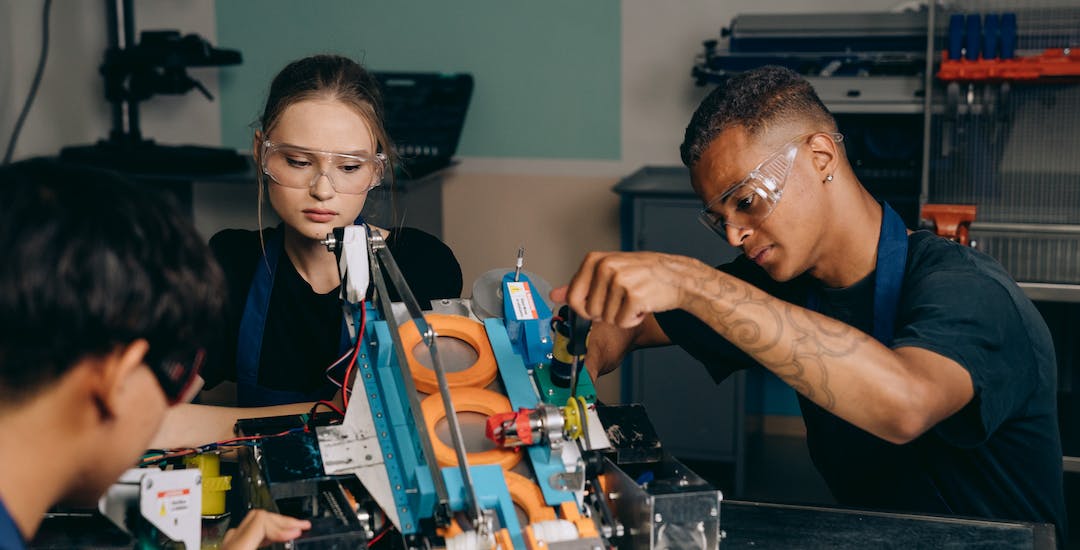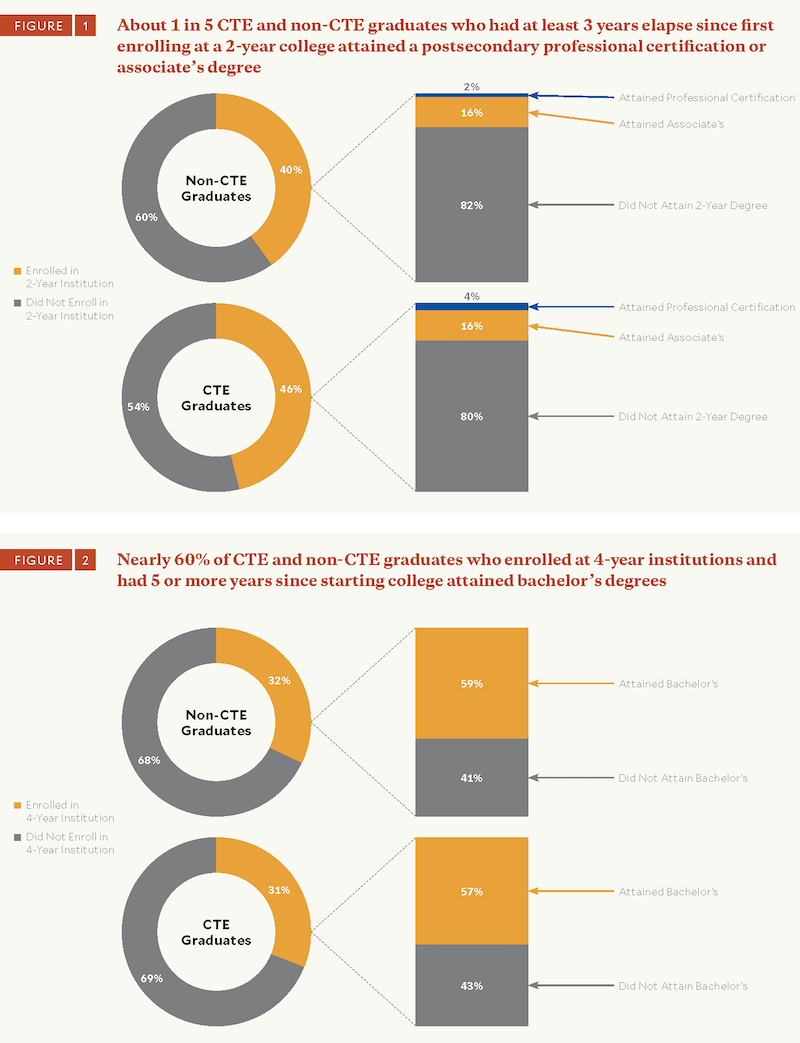Across Texas, school districts have expanded their CTE course catalogs to provide on-ramps to a wide range of high-wage, high-skill occupations, including nursing, business and energy, in addition to those skilled technical fields. Recognizing that not every student may be interested in attending college or attaining a bachelor’s degree, the flexibility and breadth of CTE programming in the state provides students with the opportunity to get a head start in many viable careers — both those that might require four-year college degrees and those that don’t.
Students across the Houston region have responded by enrolling in CTE programs in high numbers. In fact, a new study from the Kinder Institute for Urban Research’s Houston Education Research Consortium of more than 260,000 recent Houston-area graduates found that nearly 7 in 10 were considered “CTE graduates,” indicating they successfully completed two or more courses in a single CTE program in high school. Most participated in programs such as business, marketing and finance, health science and information technology.
According to the study, it turns out that — in line with the shifting focus of CTE toward high-wage jobs requiring postsecondary credentials — CTE graduates in the Houston region were more likely to enroll in college than non-CTE graduates. Nearly 60% of CTE graduates enrolled in college at some point within six years of high school graduation, compared to 54% of non-CTE graduates. They were especially more likely to enroll in two-year colleges, while CTE and non-CTE graduates were about equally likely to enroll in a four-year college or university. Those from CTE programs such as health science, STEM and education were the most likely to attend college.
In addition to being associated with higher levels of college enrollment, CTE participation was found to enhance earnings. In the year right after high school graduation, CTE graduates earned about 6% more than non-CTE graduates. For those who worked and enrolled in college in the year right after high school, the boost was even larger for CTE graduates, as they earned about 8% more than their non-CTE peers who were working and in college.
By six years after high school graduation, though, what mattered more than CTE participation was whether or not graduates had attained a postsecondary credential or degree, the study found. Among both CTE and non-CTE graduates, those with bachelor’s degrees earned the most six years after high school, followed by those with professional certifications. Those with associate’s degrees also earned more than those with no certification or degree, although they did not earn as much as their peers with bachelor’s degrees or professional certifications. Crucially, these professional certifications do not require ever enrolling at a four-year college; they are awarded by two-year institutions and often require significantly less coursework than an associate’s degree.
Therein lies the crux of the study’s findings: Though CTE participation provided early benefits in terms of enrolling in college, CTE graduates were no more likely than non-CTE graduates who enrolled in college to attain postsecondary credentials or degrees. Overall, only 30% of all graduates in the study attained bachelor’s degrees, 10% attained associate’s degrees, and startlingly few — about 2% — attained professional certifications despite their notable benefits to earnings.
This is a critical point, because jobs increasingly require postsecondary credentials (by one estimate, 70% of jobs by 2036 will require one). CTE appears to be helping students get into college, but once there, they are not necessarily more successful at attaining credentials or degrees.
The study poses an important challenge: How can school districts, two-year colleges and four-year institutions work intentionally together to support higher rates of attaining degrees or certifications? School districts are investing significant time and resources into creating the highly trained workforce we need; the next step is to ensure that the skills these graduates are gaining in high school translate into long-term postsecondary success.
Not every graduate will be interested in enrolling at a four-year college or university, nor should they have to. Forging intentional partnerships between CTE programs and related college programs — particularly at two-year institutions that provide professional certifications — can be an important step in strengthening the connection between graduates’ secondary and postsecondary trajectories.
Counseling and mentorship programs that extend beyond high school can also be important in helping graduates connect the significant skills they are learning in CTE to associated careers and postsecondary credential programs. Similarly, partnerships with industry and business entities can directly connect students’ coursework to on-the-job, practical experiences in occupations aligned with their CTE programs.
CTE participation provides graduates with important benefits in their postsecondary lives, especially in the years right after high school graduation. The next step is to work to ensure that those benefits last well beyond high school to prepare our CTE graduates for the workforce of today and tomorrow.
Patrick Gill is a former senior research analyst with the Houston Education Research Consortium (HERC) at the Kinder Institute for Urban Research. He currently serves as the manager for data and analytics for Good Reason Houston. Gabriela Sánchez-Soto is a research scientist with HERC.





